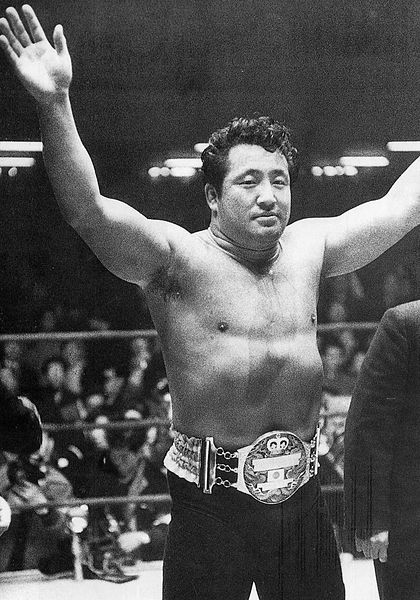Professional wrestling in Japan
Professional wrestling in Japan has existed for several decades. The first Japanese person to involve themselves in catch wrestling was former sumo wrestler Sorakichi Matsuda. There were subsequent attempts before and after World War II to popularize the sport in Japan, but these generally failed until the advent of its first big star, Rikidōzan, in 1951, who became known as the "father" of the sport. Rikidōzan brought the sport to tremendous popularity with his Japanese Wrestling Association (JWA) until his murder in 1963. Following his death, professional wrestling thrived, creating a variety of personalities, promotions and styles. It has also created a mass of other cultural icons in Japan including: Antonio Inoki, Giant Baba, Jyushin "Thunder" Liger, Tiger Mask, Keiji Mutoh/The Great Muta, Mitsuharu Misawa, and Kenta Kobashi among others. Throughout the years, several promotions have opened and closed, but a few have persisted to remain the most popular and thriving companies: New Japan Pro-Wrestling is currently considered by many as the top promotion.

Rikidōzan is widely credited with kickstarting the popularity of professional wrestling in Japan following World War II
Mitsuhiro Momota , better known as Rikidōzan (力道山), was a Korean-born Japanese wrestler who competed in sumo and professional wrestling. He was known as The Father of Puroresu, and one of the most influential persons in professional wrestling history. Initially, he had moved from his native country Korea to Japan to become a rikishi. He was credited with bringing the sport of professional wrestling to Japan at a time when the Japanese needed a local hero to emulate and was lauded as a national hero. He was inducted into the WWE Hall of Fame in 2017, becoming the first Korean inductee and the third puroresu star to be inducted after Antonio Inoki and Tatsumi Fujinami. He was killed in a street fight with a member of the Sumiyoshi-ikka in 1963.
Rikidōzan with the Japanese Heavyweight Championship belt, 1954
Rikidōzan in 1949, in traditional sumo keshō-mawashi
Rikidōzan's expensive apartment in Japan, called "the Riki Mansion", as it existed in 2007
Rikidōzan entered Sannoh Hospital after being stabbed




